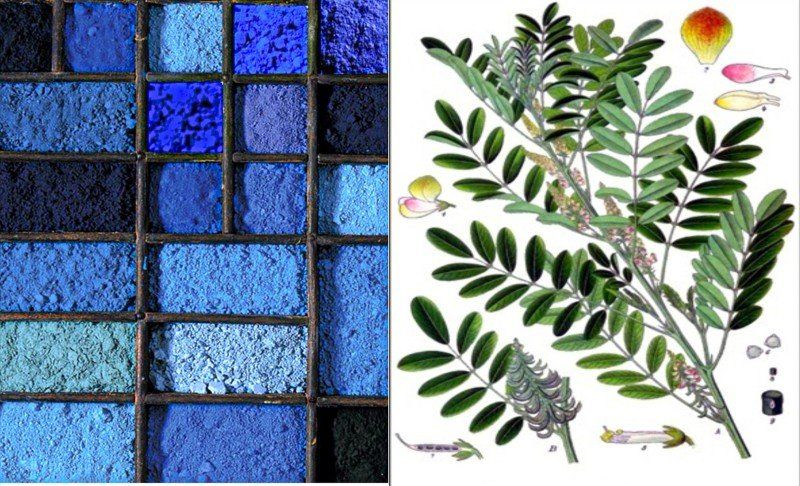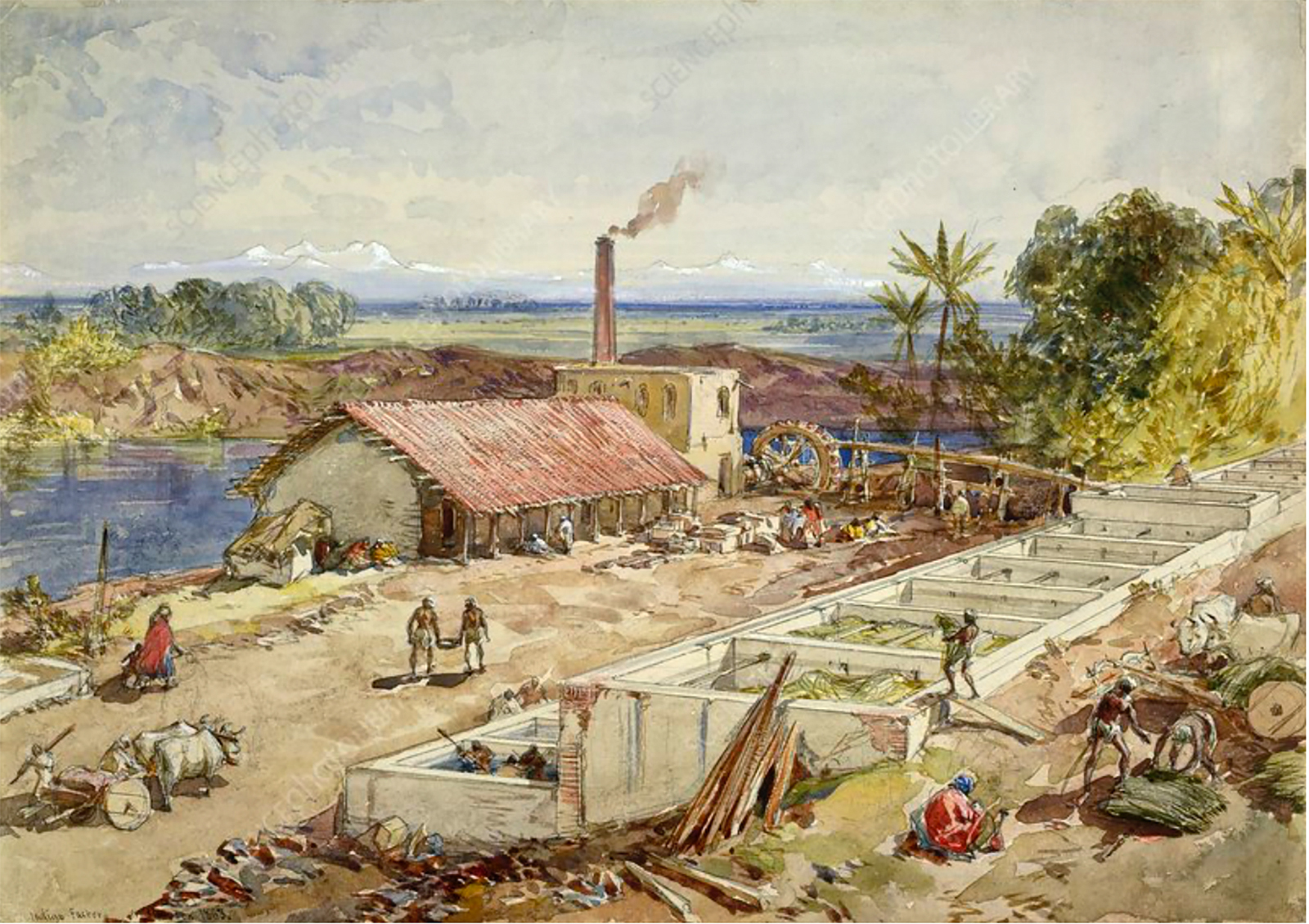Blue as the sky and the ocean. On Indigo. Part 1.
Duran Textiles AB |28/01, 2024

Text by Laila Duran.
With today's access to textiles in all colors, it can be difficult to understand how extremely sought after and expensive the blue color that almost every person, young and old, is now dressed in. It may sound like a fairy tale but once upon a time, a long time ago, the blue dye indigo was a luxury that only the very rich had access to. Indigo was named "the blue gold" and its value was on par with silk, coffee, spices and gold.

Indigofera, is a pea plant whose leaves give the brightest and most intense blue. It grows in tropical areas such as India, Asia and Egypt where they have a several thousand year old tradition of producing this dye.
To begin with, the leaves and new twigs are harvested from the Indigofera plant, then soaked in water to allow the indican (an amino acid) to release glucose. The released indican then begins to ferment with the other plant enzymes and after a few days the result will be a yellow and turbid water. The product of the fermentation process is called "indoxyl" and when allowed to air dry, it oxidizes and coagulates into the coveted dark blue pigment. When the pigment is mixed with an alkaline solution, usually bicarbonate of soda, the mass can be pressed into bricks and dried. The set bricks are then finally ground into a fine powder.
The man in the picture belongs to a group of nomads called the Tuareg who move all over North Africa. They are known as the "Blue People of the Sahara" or the "Men of the Veil" because of the indigo turbans they wear. Only the men dress in this veil-like garment, which they may start wearing only after a rite of passage at the age of 18. The color is central to the male role and represents cultural values of modesty and humility while the turban protects from the hot sun and sand dust.
Indigo first came to Europe on ships carrying spices, fabrics and exotic woods from India and West Africa. The arduous process of obtaining the dye combined with the dangers of the voyages, where many cargoes were lost, made the price of the dye matter sky high. Thus people began to look around for alternatives. The only plant in Europe that produces a similar blue color is the tall lush herb Isatis tinctoria or in Swedish Vejde. Unfortunately, the color was never as intense or colorfast as Indigo, but people used what they had access to. For example, the blue color in the Swedish flag was originally colored with Vejde, as were the uniforms of Karl XII's army of Karoliner.

During the 18th century, thousands of tons of indigo were shipped from the colonies to the ports of Europe, and as the demand for fabric dyes increased, there was a massive expansion of cotton production due to industrialization. The East India Company tried in various ways to increase the cultivation of indigo to an almost insatiable market by having its own officials to run large plantations. During the latter part of the 18th century, Britain imported 95% of all indigo from India, which was then mainly grown in Bengal, the largest and most populous province that became part of British India in 1757 when the British defeated the Mughal army.
The Indian farmers were pushed hard to increase indigo production. The Westen colonizers went so far as to deny the farmers the right to grow local crops to eat. Eventually this would end in rebellion, in what came to be known as the "Indigo Revolt".
 In the early 1740s, in a completely different part of the world was discovered to be suitable for the cultivation of indigo. It was the English's search for the dye that led to the discovery of, a variant of the "true" indigo, growing in Florida. During that period, the British had 13 colonies in North America, of which South Carolina had the right conditions for cultivation. For the next fifty years, indigo was farmed for export exclusively to England and formed a significant part of South Carolina's economy.
In the early 1740s, in a completely different part of the world was discovered to be suitable for the cultivation of indigo. It was the English's search for the dye that led to the discovery of, a variant of the "true" indigo, growing in Florida. During that period, the British had 13 colonies in North America, of which South Carolina had the right conditions for cultivation. For the next fifty years, indigo was farmed for export exclusively to England and formed a significant part of South Carolina's economy.

Take part in the competition to win these three great prizes. Duran Textiles fabrics in indigo: 1m VALLMO and 1m CLOVER, as well as the new book about INDIGO by Kerstin Neumüller and Douglas Luhanko. All you have to do to be in the draw is to send an email by February 15 to: [email protected] and write: INDIGO competition.
I wish you luck!
 Svenska
Svenska
 English
English